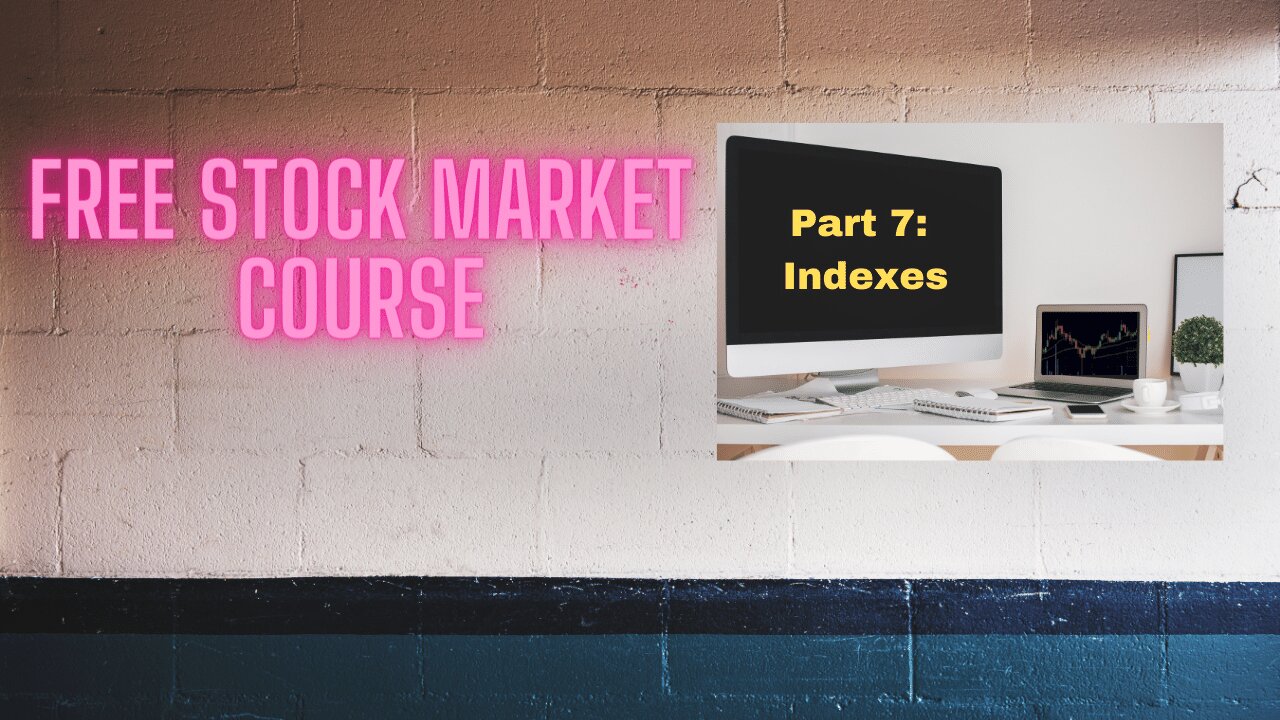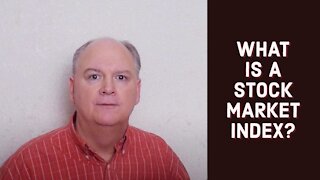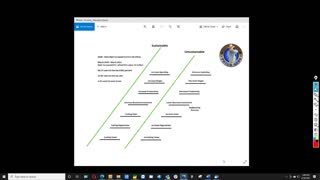Premium Only Content

Free Stock Market Course Part 7: Financial Market Indexes
Free File downloads
Course notes, Audio files, Assessments, Transcript files, and Course Outline: https://spxinvestingblog.com/downloads/
My Exclusive Free Workshop: The Four P's of Building a Successful Investing Program → https://spxinvesting.mailchimpsites.com
Blog: https://spxinvestingblog.com
Facebook Group: https://www.facebook.com/groups/433843641082343
Videos Referenced:
Intermarket Analysis: https://youtu.be/rB4gkPrYWtA
Mutual Funds: https://youtu.be/jOI0g4fKmSc
Sectors: https://youtu.be/K0PEW4q-vLM
Two Types of Technical Analysis Indicators: https://youtu.be/ge0KiCIjpzE
Market Observation: https://youtu.be/git6h2OR7Mc
Chapters:
00:00 Market Indexes
00:10 Indexes or Indices?
01:04 Definitions
02:24 Background
04:09 Indexes
06:25 Most Popular US Indexes
09:59 Additional Popular US Indexes
13:39 Index Calculations and Uses
15:47 Types of Indexes
18:21 Analysis
29:34 Conclusion
Module 2 Section 6
What are Financial Market Indexes?
Indexes or Indices?
In the US, “indexes” and “indices” are usually used interchangeably.
Outside the US, “indices” is the preferred word.
Both “indexes” and “indices” are considered correct.
I usually use the word “indexes.”
Definitions
Types of Charts
Intraday
Daily
EOD (End of Day)
ETF
Volume
Background
Until the late 1800s, the stock market's current condition was known only by what stocks an investor owned.
In the late 1880s, Charles Dow created a hypothetical index of the most important companies at that time.
This would lead to the Dow Jones Industrial Average.
Today, there are over 5,000 indexes for US markets.
Which ones are best?
Market participants will find an index they like, and that often becomes an index of focus.
This method fits well into The Consensus Approach implemented by The SPX Investing Program.
Indexes
Indexes can represent a broad or narrow segment of the financial markets.
Calculations are made based on the stock values that make up an index.
Most indexes are weighted according to the size of the company.
Different weighting methodologies are used.
Price-weighted (The DOW)
Value-weighted (number of shares) (SPX)
Unweighted
There are unweighted indexes that can be followed.
Most Popular US Indexes
Stock Market Indexes:
1. The Dow Jones Industrial Average (DJX)
ETF: DIA and mutual funds
30 stocks
2. The S&P 500 Index (SPX)
ETF: SPY and mutual funds
505 stocks
3. The Nasdaq Composite Index (COMP)
Stocks: 2667
The Nasdaq 100 Index (NDX)
ETF: QQQ and mutual funds
Stocks: 102
Bond Market Indexes:
1. Bloomberg Barclays U.S. Aggregate Bond Index ETF
Investors don’t directly invest in an index but use them as broad-based benchmarks and for developing index funds and ETFs.
Additional Popular US Indexes
Small-Cap Indexes
Russell 2000
S&P 600
Mid-Cap Index
S&P 400
Other markets
US Dollar Index (DXY) ($USD)
Gold (GLD)
Oil ($WTIC)
FAANG Index
Volatility Index: $VIX
CRB Index
Index Calculations & Uses
Each index is calculated differently.
Some indexes are calculated in a simple manner, and others are complex.
The index creator will specify the method and rationale of the method.
Investors and money managers use indexes to base performance.
Some investors create their own index based on a portfolio or to gain specific insight.
Types of Indexes
Narrow Indexes:
Sectors
Tech Sector ($SPT)
Micro-sectors
SOX Index ($SOX)
Bond indexes based on maturity
Geographic segment:
Emerging markets
EEM
Taiwan, China, Japan, Brazil, India, etc.
World indexes
ACWI (All Country World Index)
Germany ($DAX)
Japan Nikkei ($NIKK)
Analysis
For members, The SPX Investing Program posts a weekly video that analyzes US indexes and world indexes.
All indexes are viewed each day but typically reported each week.
If necessary, significant changes are reported in the daily videos.
Conclusion
There are thousands of indexes available.
Some indexes are helpful for providing insight, while others duplicate what is already available. Still, others do not offer additional insight.
Market participants find indexes that become popular.
Indexes are used to create index funds and ETFs.
The multitude of indexes used for insight by The SPX Investing Program is constantly changing.
Comparisons can be made based on a big picture view and a more narrowly focused view.
-
 5:39
5:39
The SPX Investing Program
3 hours agoDaily Update Podcast for Thursday July 31, 2025
23 -
 21:15
21:15
The SPX Investing Program
3 years ago $0.01 earnedFree Stock Market Course. Part 6: ETFs
330 -
 33:32
33:32
The SPX Investing Program
4 years agoWhat Are Financial Market Indexes?
661 -
 4:19
4:19
Fanatical Finance
3 years agoUnderstanding the Stock Market Part 2! | What is the Stock Market?
715 -
 8:17
8:17
The Phil's Gang Radio Show Channel
4 years agoStock market crash starting to unfold part 22
65 -
 8:51
8:51
The Phil's Gang Radio Show Channel
4 years agoStock market crash starting to unfold part 16
31 -
 8:24
8:24
The Phil's Gang Radio Show Channel
4 years agoStock market crash starting to unfold part 15
17 -
 7:29
7:29
The Phil's Gang Radio Show Channel
4 years agoStock market crash starting to unfold part 14
40 -
 7:06
7:06
The Phil's Gang Radio Show Channel
4 years agoStock market crash starting to unfold part 13
20 -
 LIVE
LIVE
The Bubba Army
20 hours agoShannon Sharpe FIRED after Sex Lawsuit - Bubba the Love Sponge® Show | 7/31/25
2,380 watching